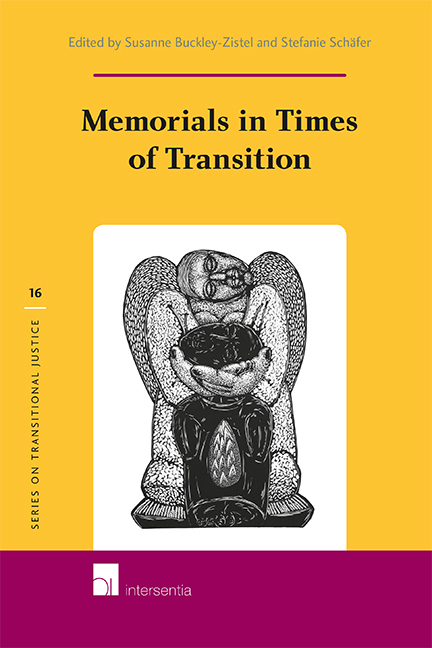Chapter 2 - Reflecting the Fractured Past: Memorialisation, Transitional Justice and the Role of Outsiders
Published online by Cambridge University Press: 16 December 2020
Summary
Over the past decade, memorialisation has become linked to the emerging field of transitional justice. Focused on “facilitating a transition to democracy”, transitional justice encompasses a range of interventions promoting truthseeking, justice and reparations for victims, including symbolic reparations in the form of memorials, public apologies and other public memory initiatives. Increasingly, transitional justice and memorialisation involve outside actors – individuals from other societies who provide specialised expertise through organisations operating at the regional and international levels. Some ‘outsiders’ also get drawn inadvertently into memorialisation through their work as peacekeepers or development practitioners involved in post-conflict peace building or reconstruction initiatives, as central to this chapter. But, despite growing interest in the role of historical memory in societies experiencing conflict and undergoing transitions, the contribution of memorialisation to transitional justice remains under-studied, especially the impact of outsiders involved in memorialisation. This gap reflects the fact that efforts to assess the impact of transitional justice more broadly are relatively recent and inconclusive.
In 2006, the United States Institute of Peace organised the Memorialisation Working Group to engage practitioners in reflective examination of the challenges they have faced with respect to memorialisation. This chapter shares insights from those discussions, as well as perspectives from other practitioners engaged in memorialisation since then. It focuses on practical questions with which practitioners continue to grapple: what is memorialisation, and what forms does it take? Who is involved and what are their motivations? How do different forms of memorials reflect different types of conflict? How is memorialisation connected to transitional justice? What specific roles can and do outsiders play in memorialisation, and what pitfalls should they anticipate?
DEFINING MEMORIALISATION: FORMS, TIMING, INITIATORS AND INTENTIONS
The urge to remember violence and repression is as prevalent as the impulse to eradicate terrible memories and move on. Memorialisation encompasses a wide range of forms and processes to honour and commemorate victims and survivors. While some initiatives are designed to reduce conflict and promote reconciliation and social reconstruction, others aim at the opposite effect by valorising polarising figures and historical narratives.
- Type
- Chapter
- Information
- Memorials in Times of Transition , pp. 47 - 68Publisher: IntersentiaPrint publication year: 2014
- 5
- Cited by



